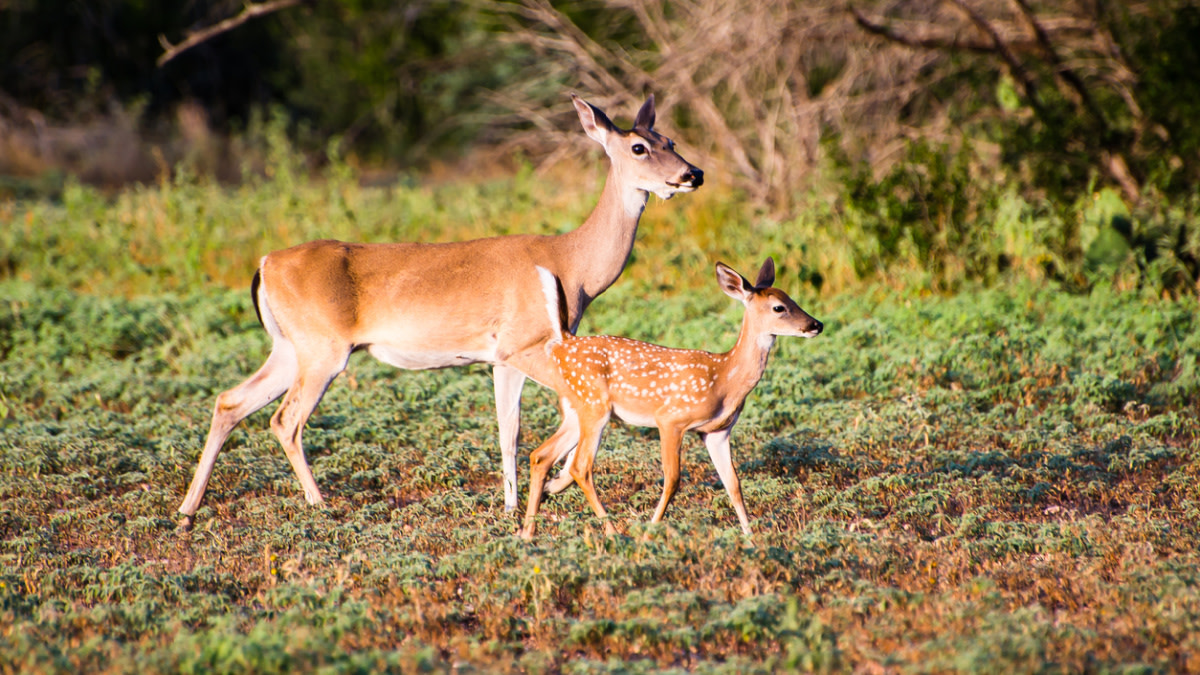
The future of any whitetail herd is in the success and survival of each year's fawn crop. Deer are exceptionally adaptive but certainly require adequate cover for safety. Trying to grow "giant bucks" is futile if you fail to maintain a positive fawn recruitment rate.
What is fawn recruitment rate? It's a measurement of the number of fawns per adult doe that survive to at least six months of age. Therefore, a rate of 1.0 is one fawn recruited into the herd per one adult doe. An effective way to capture this data is through trail camera surveys and by recording observations during the hunting season. This is something I discussed on Episode 529 of the Wired To Hunt Podcast.
Fawn Predation Predation is the primary cause of mortality for fawns. But what’s killing newborn deer? A 2020 study in the Chattahoochee National Forest in the Southern Appalachian region of Georgia found 16% fawn survival, with predation accounting for 81% of mortalities. In a 2016 research paper “The Impact of Predators on Deer in the Southeast,” David Osborn and Mark McConnell reported that of "91 radio-collared fawns, 56 (80% of deaths) likely were killed by coyotes.” A University of Georgia study conducted in southwestern Georgia collared 47 fawns, of which coyotes killed 11. A few other deer survival studies have similarly shown that coyote predation can be the primary source of fawn deaths and might limit fawn recruitment in the Southeast.
Coyotes have continued to expand eastward in recent decades, though the Canids already had a storied history of surviving and adapting to a broad array of environments in North America. They will quickly recolonize and habitat niches left by other packs that have been killed off. Their ability to adapt and quickly bounce back make them quite difficult to manage.
These predators wreak havoc on my farm. Last spring, while driving a logger through our property, we witnessed a coyote run off with a dead fawn clinched between its jaws. If you trust the data, you have to assume that a large portion of the fawns every year fall to the yip-dogs.
So, what options do land stewards have to combat fawn predation? Even with trapping and predator hunting year-round, you will never keep new ’yotes from filling vacancies, whether as transient loners or with nearby packs. If you ask any land manager, they'll tell you the best defense against predation is improving the habitat for the deer.
Ground Disturbance Prescribed fire, light disking, and clear-cutting smaller timber sections are all good examples of ground disturbance, which creates high-quality, dense bedding sites. Results from controlled burns and disking largely depend on tree canopies, the basal area densities, and the frequency of disturbance. It doesn’t take much to diversify the ground and let the native seed bank take over. Monitor the results and repeat as needed. Rotating sections each year is ideal and effective as ground disturbance can produce excellent fawning cover for many years.
Creating a cutover is also an excellent practice to promote fawn survival through bedding and native forage. When National Deer Association Founder Joe Hamilton visited our farm in 2019, he left me with many enhancement suggestions, but one in particular stood out that I won’t forget. We have a series of agriculture fields with a very open timber stand adjacent on one side—but it’s a little too exposed for whitetails to comfortably travel through during daylight. This means the deer won’t hit the fields until after legal shooting hours. Mr. Hamilton suggested clear-cutting a smaller section within the block, letting it grow up wild, and resetting the vegetation after three years of natural growth by burning or cutting it down and starting the cycle all over again.
What would this accomplish? First, it would provide deer with bedding adjacent to the fields, allowing hunters a realistic opportunity to fill a tag. Second, the new natural thicket would offer mother does outstanding fawning cover with a distinct edge created by the thicket.
Edge is Key for Fawns According to a 2017 research paper, “fawns with the least edge in their home range were 2 times more likely to be predated by a coyote than fawns with the greatest edge availability.” That is staggering data, to say the least. The research was conducted from 2007 to 2012 at a Savannah River site in South Carolina.
Diversity is king. Monoculture is typically not well-suited for fawns—especially if the area is predominantly open timber with little to no cover. I recently wrote an article about pine stand habitat for whitetails which covers my "checkerboard" approach for timber farms. By consistently clear-cutting small 5- to 50-acre sites every five to 10 years, you will seamlessly maintain thickets that provide fawns with abundant safety.
The Basketball Benchmark Dr. Bronson Strickland and Dr. Steve Demaris of the Mississippi State University Deer Lab give us a simple and yet highly effective way to measure fawning cover: Take a basketball and throw it as far as you can in the woods. If you can still see the ball, it's poor cover. If the ball disappears from sight, it's likely excellent cover. Predators typically travel paths of least resistance—roads, field edges, firebreaks—hunting for their next meal. If a section is thick and nasty enough that you don't want to run through it, chances are, neither does a predator. Deer, on the other hand, will close their eyes and bury right into a briar thicket with ease and agility.
By improving and creating bedding sites, you will increase the carrying capacity for your local herd. This should be done in tandem with enhanced food sources. Furthermore, you will most certainly need to harvest more deer.






Conversation